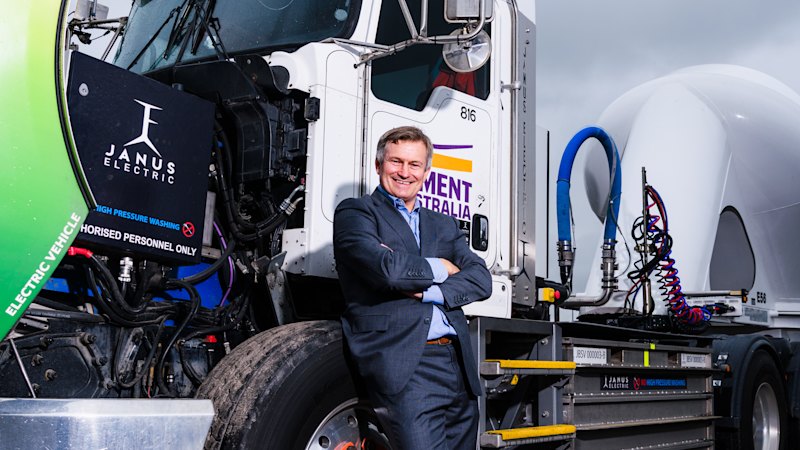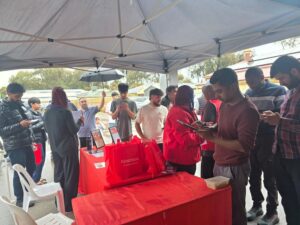
Australia’s trucking industry is at a pivotal moment as it grapples with the urgent need to reduce greenhouse gas emissions. By 2023, transport is projected to surpass energy production as the leading source of emissions, primarily due to the reliance on diesel trucks. In 2024, the sector is estimated to have emitted 22 million tonnes of CO2, which accounts for nearly a quarter of all transport emissions in the country.
The transition to greener alternatives is hindered by limited charging and fuelling infrastructure for electric and hydrogen-powered heavy vehicles, alongside significant costs associated with these technologies. Industry experts agree that the sector will eventually decarbonise, yet there is ongoing debate about whether battery electric or hydrogen-fuelled trucks represent the best long-term solution.
Technological Innovations and Infrastructure Commitments
The Australian federal government is actively supporting both electric and hydrogen technologies through its National Electric Vehicle Strategy. This strategy includes plans for extensive EV charging networks along major highways and the development of “hydrogen highways” along crucial freight routes for long-haul trucks.
Julie Delvecchio, chief executive of the Electric Vehicle Council, emphasizes that decarbonising Australia’s freight industry will require a “range of different strategies.” She highlights that a key advantage of electric trucks is their current availability in the market, stating, “What’s great about electric trucks is that they are commercially available now, whereas other fuels, such as hydrogen, are still in development.”
Ian Campbell, managing director of Janus Electric, which retrofits used trucks with electric vehicle batteries, notes the growing demand for zero-emissions supply chains. “We’re seeing a lot of inquiry from customers trying to create a zero emissions supply chain,” Campbell said. His company’s approach allows for the conversion of ageing trucks into electric vehicles without the need for new infrastructure, though these conversions are limited to return-to-base trips ranging from 150 kilometres to 350 kilometres, depending on the cargo weight.
Debating the Future of Fuels
Battery electric trucks are widely regarded as the most viable option for shorter routes that can be completed on a single charge. However, the industry continues to debate the optimal strategy for decarbonising long-haul transport, particularly along Australia’s eastern seaboard, which is responsible for a significant portion of emissions.
Todd Hacking, chief executive of the Heavy Vehicle Industry Association, points out that the choice of fuel often depends on the specific freight task. “Battery electric is obviously harder when it gets to longer haul trucks,” he said. He advocates for policies targeting long-haul trucking to maximize emissions reductions effectively.
Scott Brown, managing director of Pure Hydrogen, contends that hydrogen fuel cells are better suited for long-distance transport. “Anything that is short distance, i.e., inner-city delivery, is quite a good application for battery electric,” Brown explained. He believes that hydrogen fuel cell vehicles can achieve longer ranges due to the ability to fit multiple fuel tanks, although the carrying capacity of the vehicle remains a crucial factor.
Scott Dwyer, research director at the University of Technology Sydney’s Institute for Sustainable Futures, acknowledges that both battery electric and hydrogen technologies face challenges. He notes that the current landscape offers more choices for battery electric trucks, stating, “There’s really not that choice for hydrogen if you’re a truck business that wants to decarbonise.”
The lack of a robust hydrogen supply network and high costs are significant hurdles, as Hacking points out: “Until those two things are solved, I suspect that hydrogen is going to be a little bit further off than what it once was.”
Despite these challenges, advocates for hydrogen, like Brown, envision a future where businesses and governments develop refuelling infrastructure along major routes. He suggests that as the industry grows, service stations could offer both electricity and hydrogen alongside traditional fuels like diesel.
Dwyer predicts that battery electric solutions will continue to advance and dominate the market, suggesting that an electric highway may soon be established to decarbonise particularly busy freight routes. He acknowledges the potential for limited hydrogen pilots but maintains that the focus will remain on battery electric vehicles for heavy-duty applications.
As the trucking industry navigates this complex transition, its approach to decarbonisation will have lasting implications for Australia’s overall emissions profile and its commitments to combating climate change.






